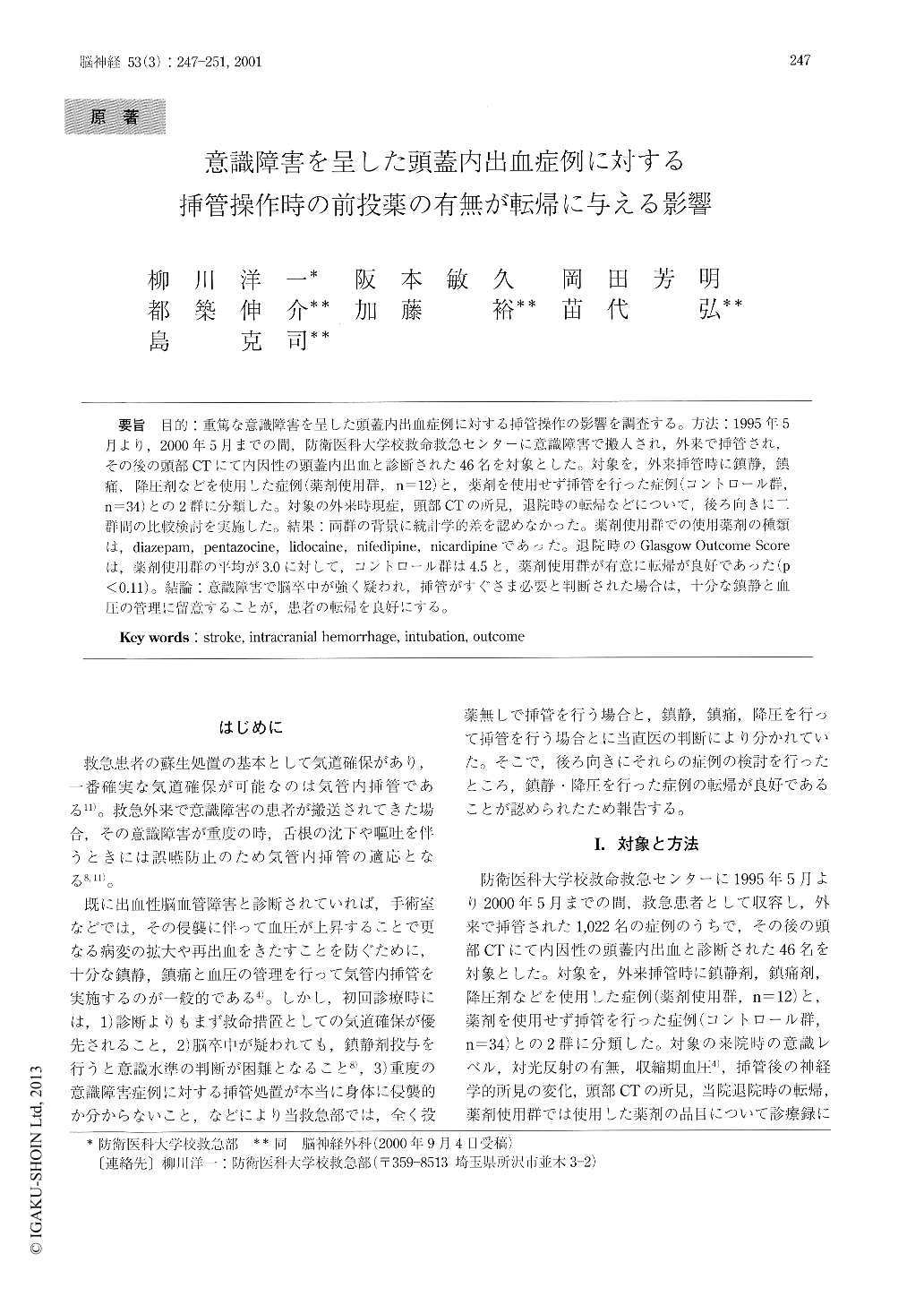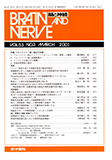Japanese
English
- 有料閲覧
- Abstract 文献概要
- 1ページ目 Look Inside
目的:重篤な意識障害を呈した頭蓋内出血症例に対する挿管操作の影響を調査する。方法:1995年5月より,2000年5月までの間,防衛医科大学校救命救急センターに意識障害で搬人され,外来で挿管され,その後の頭部CTにて内因性の頭蓋内出血と診断された46名を対象とした。対象を,外来挿管時に鎮静,鎮痛,降圧剤などを使用した症例(薬剤使用群,n=12)と,薬剤を使用せず挿管を行った症例(コントロール群,n=34)との2群に分類した。対象の外来時現症,頭部CTの所見,退院時の転帰などについて,後ろ向きに二群間の比較検討を実施した。結果:両群の背景に統計学的差を認めなかった。薬剤使用群での使用薬剤の種類は,diazepam, pentazocine, lidocaine, nifedipine, nicardipineであった。退院時のGlasgow Outcome Scoreは,薬剤使用群の平均が3.0に対して,コントロール群は4.5と,薬剤使用群が有意に転帰が良好であった(p<0.11)。結論:意識障害で脳卒中が強く疑われ,挿管がすぐさま必要と判断された場合は,十分な鎮静と血圧の管理に留意することが,患者の転帰を良好にする。
Purpose : To clarify the influence of intubation ma-neuver with or without premedication for intracranial hemorrhage with unconsciousness. Methods : Be-tween May 1995 and May 2000, we analyzed retro-spectively 46 patients who had received intubation forunconsciousness and were found non-traumatic intra-cranial hemorrhage by head computer tomography atthe Trauma and Critical Care Center, National De-fense Medical College. They were divided into twogroups, Drug group in which drugs were used beforeintubation and Control group which were intubatedwithout drugs.

Copyright © 2001, Igaku-Shoin Ltd. All rights reserved.


